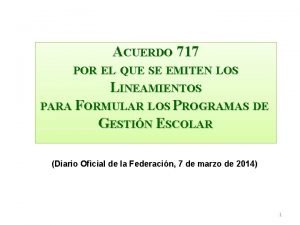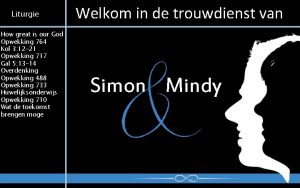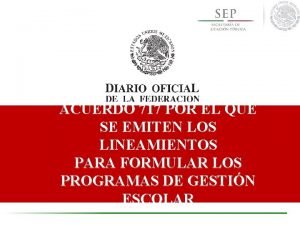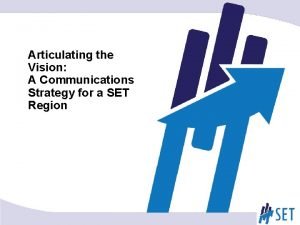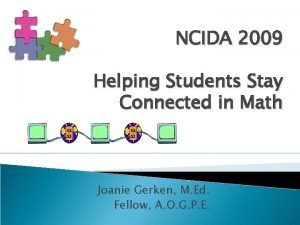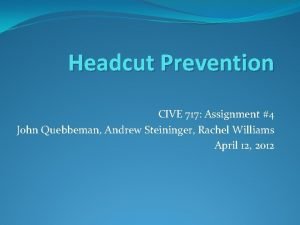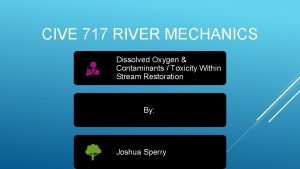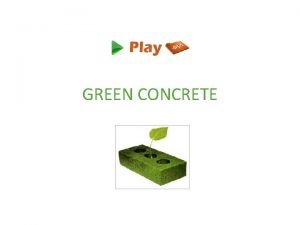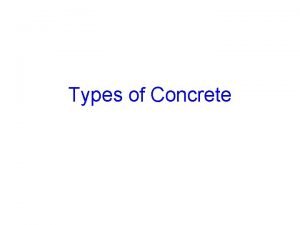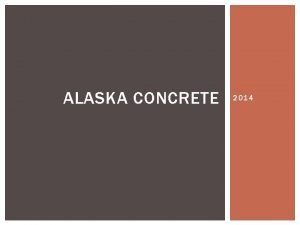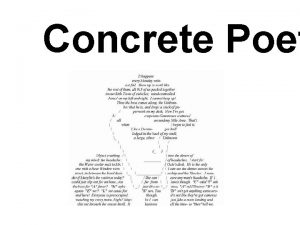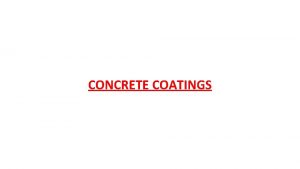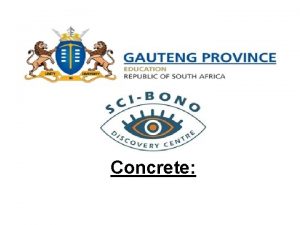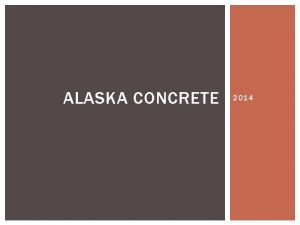Articulating Concrete Mattresses DANNY WHITE CIVE 717 SPRING











- Slides: 11

Articulating Concrete Mattresses DANNY WHITE CIVE 717, SPRING 2019

Overview • Articulated concrete mattresses are bank stabilization structures in which concrete blocks are connected with rebar or other flexible material. • They have the ability to adjust to erosive processes in the river while staying connected.

History of Use in U. S. Constructing the Goldbottom revetment in Mississippi, 1964; images via the Public Library of Cincinnati and Hamilton County Workers on a barge constructing willow fascine mattresses. The U. S. Army Corps of Engineers developed an Articulated Concrete Mattress (ACM) system that was used extensively in bank stabilization projects along the Mississippi river over the past 60 years. It is still used on the Lower Mississippi and has a good service record. This method was preceded by willow mattresses that were also used experimentally as erosion control structures on the Mississippi river.

Advantages • Can completely cover entire river bank. • Flexible articulating nature allows for adjustment to river morphology. • Can be used in large rivers with high shear and erosive potential. • Smooth flat surface can provide walking path. • Spacing allows vegetation to grow between blocks. • Can be installed with confidence in deep rivers.

Disadvantages • Large size does not allow for installation in channels with tight bends. • Open space between concrete blocks allows for erosion of fine materials below mattress. • Intensive site preparation to ensure secure placement of mats on banks. • Expensive to install compared to riprap and requires specialized equipment.

Installation example in Canmore Alberta, an area dominated by snowmelt runoff in the spring and large flows. Cougar Creek passes high spring flows and articulated concrete mats stabilize banks at this culvert.

Design methods ACM can be used to line the entire channel bank and channel bottom. It is suggested to use a geotextile fabric and/or filter beneath the structure to minimize erosion of fine materials beneath the mattress. When placed on steep banks, ACM should be anchored to a secure geological feature. When only stabilizing the bank, the toe of the structure should extend to the deepest point of predicted scour to ensure bank stabilization should incision occur.

ACM can be stored efficiently due to their geometric shape. They can be formed at the construction site or transported. ACM manufactures typically have the capability to produce a product that meets the specific requirements of a project. There also instances of cinder and concrete blocks that are slightly lighter and easier to install but may not provide as much bank stabilization.

Manufacturing and Installation ACM formed in different shapes and sizes with modular design. Specialized barges used for installation of mats in large rivers such as the Mississippi Large cranes with specialized lift mechanisms place heavy ACM structures.

Conclusion ACM are an effective solution providing flexible bank and channel stability. They remain in use and see continued installation on the lower Mississippi river and have the potential to be used on large rivers throughout the world. Although expensive, this channel stabilization structure will continue to be used in varied future applications.

References Army Corps of Engineers. ‘The U. S. Army Corps of Engineers: A Brief History’. [Online]. Available: https: //www. usace. army. mil/About/History/Brief-History-of-the-Corps/The-Growing-Nation/. [Accessed: 4 -1 -2019]. P. Julien, River Mechanics Second Edition. Cambridge University Press, 2018, p. 241.

